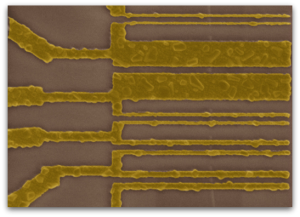 Since the development of the transistor in 1947, the semiconductor industry has been working to rapidly and continuously improve performance and processing speeds of computer chips. Following Gordon Moore’s iconic law—stating that transistor density would double every two years—the semiconducting silicon chip has propelled technology through a wave of electronic transformation.
Since the development of the transistor in 1947, the semiconductor industry has been working to rapidly and continuously improve performance and processing speeds of computer chips. Following Gordon Moore’s iconic law—stating that transistor density would double every two years—the semiconducting silicon chip has propelled technology through a wave of electronic transformation.
Next Electronics Revolution
But all good things must come to an end. The process of packing silicon transistors onto computer chips is reaching its physical limits. However, IBM researchers state that they’ve made a “major engineering breakthrough” that provides a viable alternative to silicon transistors.
The team from IBM proposes using carbon nanotube transistors as an alternative, which have promising electrical and thermal properties. In theory, carbon nanotube transistors could be much faster and more energy efficient than currently used transistors. Nanotube transistors have never been utilized in the past due to major manufacturing challenges that prevented their wide-spread commercialization. However, the IBM researchers are combating this issue by combining the nanotubes with metal contacts to deliver the electrical current.
This from MIT Technology Review:
The researchers addressed the issue by changing the interface between a nanotube and the two metal contacts. Instead of depositing them on top of the tube, as in the conventional scheme for building nanotube transistors, they placed them at the ends of the tube and made them react with the carbon to form a different chemical compound. Using this technique, the group demonstrated that contacts less than 10 nanometers long didn’t compromise performance. (Today’s top-of-the-line silicon chips have 14-nanometer features.)
With the proven ability of the carbon nanotube transistors, the researchers will be able to make the transistors as small as necessary.
Challenges in Nanotubes
However, the exploratory research also revealed additional challenges. While the work proved that one of the hurdles preventing the commercialization of carbon nanotube transistors can be overcome, researchers and engineers will still need to improve how the metal tubes are separated from the semiconducting tubes and develop a reliable way to place the nanotubes on the chip.
IBM hopes to find solutions to these issues and have functioning carbon nanotube technology by 2020.
[Image: MIT Technology Review]
